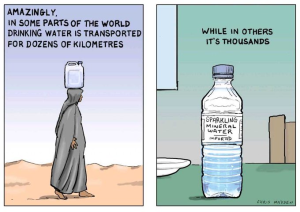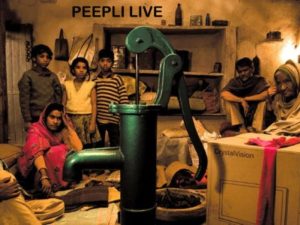If you knew that water covers 70% of our planet, you would imagine there’s no scarcity of this precious resource. If you also knew that naturally occurring freshwater, with low levels of dissolved solids and other salts, used for drinking, bathing, washing, and irrigation, constitutes 3% of the world’s water, you’d be alarmed. More so when you realize that two-thirds of such freshwater is frozen in glaciers and is unavailable.
The World Wide Fund for Nature estimates that 1.1 billion people lack access to water globally and 2.4 billion high purity. suffer from inadequate sanitation, re- resulting in diseases like cholera, typhoid, diarrhea, and other waterborne diseases. The scarcity of water also affects the growth of crops, contributing to food insecurity.
In addition, it has manifested in many civil and international conflicts with Iraq, Iran, Afghanistan, Yemen, Syria, Darfur, Sudan, Somalia, Peru, and Brazil having experienced severe conflicts over water.
What are the main causes of this scarcity? Climate change is a major contributor. Higher temperatures enhance evaporation levels, disrupt rain patterns, cause flooding and deplete water reserves. Overpopulation is another, particularly in water-stressed areas such as West Asia, India, and China. Inefficient water use, mainly for grain production and in the textile, farm products, beverages, and automotive industries are also critical.
The strain on the earth’s finite resources makes this an urgent issue, calling for new visioning, higher-order regulation, reclamation, and the deployment of potent technologies.
 Photo courtesy: Chris Madden
Photo courtesy: Chris Madden
In the words of Lucas van Vuuren of the National Institute of Water Research in South Africa, ‘Water should not be judged by its history, but by its quality.’ Widely used processes for reclamation include:
-
Membrane bioreactor solutions that combine membrane processes and biological treatment, involving bacteria and protozoa.
-
Ultrafiltration, a pressure-driven barrier that separates small particles and molecules to produce water of high purity.
-
Reverse osmosis, typically used for desalination of pre-treated water for drinking purposes that flushes out bacteria, pathogens, and pesticides.
-
Electrodialysis reversal, a durable membrane system that relies on polarity reversal for treating turbid wastewater; and thermal evaporation and crystallization for treating complex wastewater.
The fact that the energy content in waste is far greater than the energy needed for its treatment is what’s encouraging new thinking on the subject.
Smart ideas combined with digital technology can yield numerous and substantial benefits.
Checking water consumption is an excellent first step. Smart meters enable consumption monitoring and analytics to sense patterns and provide insights to encourage conservation. San Francisco reduced voluntary water consumption by 10% this way.
Digital tools are particularly useful – in providing real-time information to dissuade high-cost consumption during peak periods. Singapore has cut the demand for water by 30% with such proactive interventions.
Overpopulation is another cause for scarcity, particularly in water-stressed areas such as West Asia, India, and China.
Photo Courtesy: Peepli Live
Sensors can continuously monitor quality parameters, including pH levels, bacteria, residual chlorine, temperature, turbidity, and contaminants. Early detection ensures timely mitigation. Many cities, including Chicago, New York, and London, use digital sensors to reduce waterborne diseases.
Water treatment plants can also reduce energy consumption with real-time monitoring. Advanced analytics and modeling techniques can predict demand and optimize pumping and maintenance schedules, improving operational efficiencies significantly.
Sensors can detect leaks in water pipes and distribution systems. Earl y action can save substantial water losses, optimize maintenance schedules, and extend the lifespan of the infrastructure. Barcelona has deployed sensors with a GIS system to isolate and reduce water leakage in aging pipes by 25%. Smart instances by 50%.
In flood situations, digital technologies like remote sensing, advanced analytics, and predictive modeling are used extensively to create early warning systems and facilitate pre-emptive actions, vastly improving emergency response.
World Bank data suggests India is a highly water-stressed country with 18% of the world’s population and just 4% of its water. NITI Aayog predicts that 21 Indian cities will run out of groundwater in 2030, affecting 40% of India’s population. A recent EY article, “Water 4.0: Digital Journey of Water’, underscores how advanced technologies
When will we create water in the lab at scale combining two hydrogen atoms with one oxygen atom that feeds flames?
 Photo Courtesy: Brain On
Photo Courtesy: Brain On
like artificial intelligence (AI), advanced analytics, the Industrial Internet of Things (IoT), smart grids, neural networks, and digital twinning dominate ‘Smart Water’.
It references the Delhi Jal Board’s use of IoT, AI, and predictive analytics to treat wastewater and signal high water levels in sewers and potential pi- pipeline bursts; and Central Water Com- mission’s work that leverages machine learning (ML) and inundation modeling to predict flooding and sends out timely alerts, a system now being scaled up to cover most river systems across India.
What’s ahead? When will we create water in the lab at scale-combining two flammable hydrogen atoms with one oxygen atom that feeds flames? The jury’s out on that. Extracting water from the air as water vapor, like the Whisson Windmill that produces 2,600 gallons daily at low cost, seems a worthy alternative.
It’s riveting to see technology being used not just to avoid war among communities and nations in a water-starved world but to calm the wrath of nature.
Neerain is proud to republish this Article for spreading awareness about the situation of water, for our stakeholders. Credit whatsoever goes to the Author.
This article is published by: –
The Economic Times
We would like to spread this for the benefit of fellow Indians.
Author: Anil Nair
Publish On: July 1, 2023
